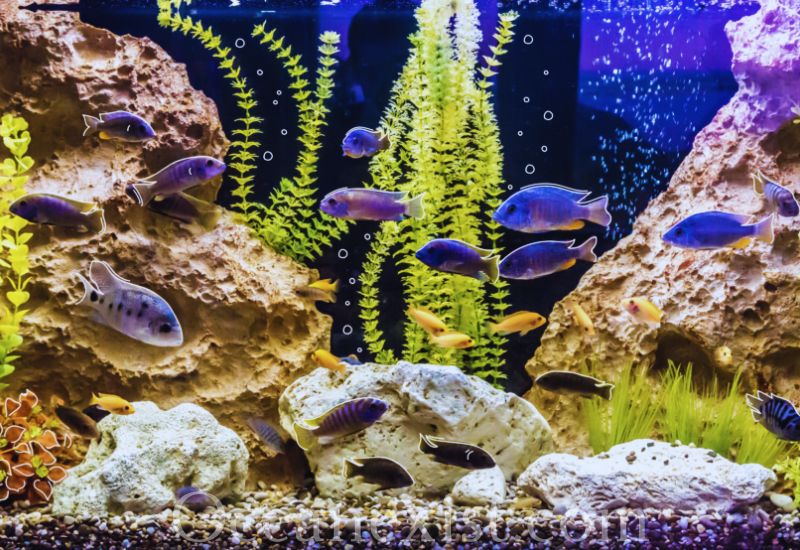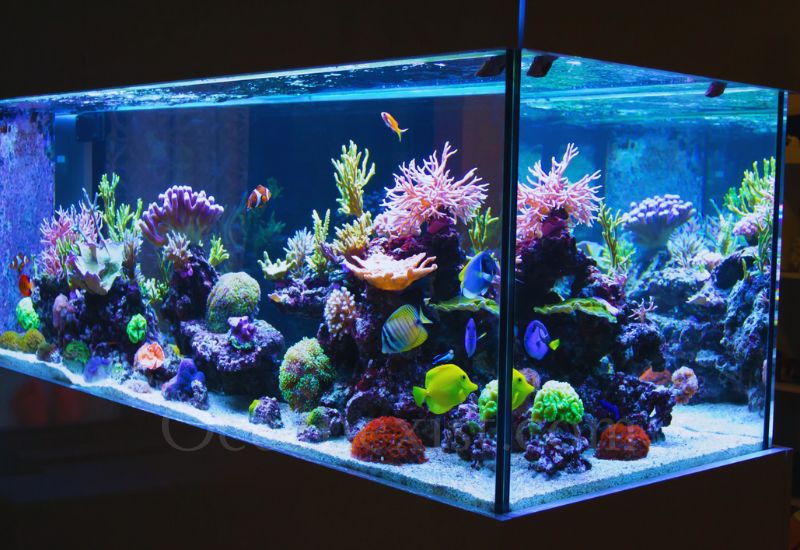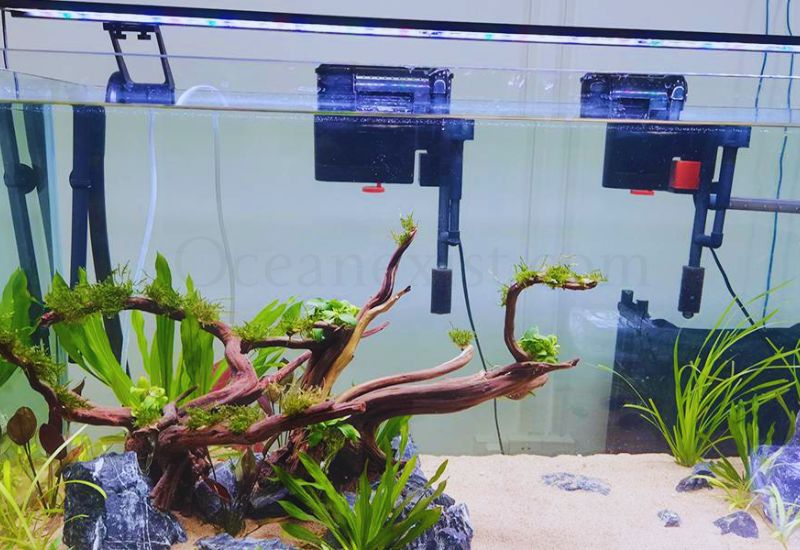Insufficient or incorrect choice of Light can promote the growth of unwanted vegetation in an aquarium, stress in fish, and growth of algae.
Think about investing a lot of time in carefully arranging your plants and contemplating your fish. Then, one day, you come, and all your plants are scorched, and your fish look like they have no energy to swim. Algae is proliferating, dominating the fish and plants.
The knowledge of fundamental principles of aquarium lighting will help turn your aquarium into a home masterpiece. It not only beautifies your tank but also assures the health of the life in that tank.
This handy guide is designed to explain all the basics of aquarium lighting.
Importance of the Aquarium Lighting

It is necessary to mention that lighting is also one of the important parameters that influences on the aquarium space and the organisms that live there. Illumination is an important factor for phytoplankton in water, the normal swimming and feeding activities of the fish, and the general outlook of the aquarium.
Photosynthesis and Plant Growth: Light is a key factor essential for photosynthesis and best survival of the fish. So, it is inevitable for plants growth and also help fish to locate food and move around in the environment.
Regulating Fish Behavior: A proper lighting system assists in controlling the feeding, and breeding of fish and their sleep-wake cycle. Fish require a seven-day/night cycle because they are brought from their natural habitat.
Aesthetic Appeal: Bright Light makes the fish and plants look more elegant and beautiful in the aquarium. Correct lighting will also enhance the hue and make it easier to bring out the vibrant colors in your tank.
Algae Control: Using the right type of Light can prevent excess algae formation, hence maintaining the aquarium’s cleanliness. Too much light benefits the algae as they will grow very fast, while low Light will slow down the growth of plants.
Types of the Aquarium Lighting

There are various types of aquarium lighting available, each suitable for different tank setups:
Fluorescent Lights
Advantages: Economical and evenly distributes Light, concurrent basic fish tanks.
Disadvantages: Fluorescent lights have a comparatively shorter lifespan than LEDs and can emit more heat.
LED Lights
Advantages: Durable, has very low energy consumption, relatively very long life span, and is available in various colors. These LEDs are also cool running and thus do not have a high probability of overheating.
Disadvantages: Initial costs are higher, but their whole life cycle cost is lower because they use less energy and last longer than incandescent lamps.
Compact Fluorescent Lights (CFLs)
Advantages: It is good for aquariums that can accommodate them because they are powerful but relatively small light sources.
Disadvantages: Shorter lifespan than LEDs and longer working hours at high temperatures.
Metal Halide Lights
Advantages: Bright lamps are suitable for large aquariums that require lots of Light, such as reef tanks.
Disadvantages: The core idea of this subcategory is a high energy consumption rate and a large amount of released heat, which needs extra cooling.
T5 and T8 Lights
Advantages: Sodium vapor lamps come in various diameters and have differences in luminous flux and efficacy. T5 lights are again more compact and brighter than T8 lights.
Disadvantages: In essence, bulbs have a shorter lifespan and have to be replaced frequently; another disadvantage is that they emit more heat than LEDs.
How much Lightning is needed?

The amount of Light needed for your aquarium depends on the type of inhabitants and the setup:
Low Light (1-2 watts per gallon): Suggested for low light plants and koi fishes, which require less intensity of light as compared to the others. Some of the examples are Java Ferns, Anubias, and certain groups of tetras and catfishes.
Moderate Light (2-4 watts per gallon): Best for the aquarium with plants and fishes in equal proportion. It helps in the growth of plants as well as the health of the fishes. This level contains plants such as Cryptocoryne and floating plants like Vallisneria suitable for gouramis and barbs.
High Light (4+ watts per gallon): Required for aquatic plants in high-density situations, reef tanks included, and for hardy plant and coral species. Plants such as Dwarf Baby Tears and Red Ludwigia need high Light, as do the vivid corals.
Tips for Choosing the Right Light
Selecting the right lighting for your aquarium involves considering several factors:
Tank Size
Depth Considerations: Big tanks need more robust lighting since water depth needs to be well illuminated. Deeper tanks require bright lighting to light up the bottom of the tank adequately.
Surface Area: Ensure that light fixture covers the entire tank surface to ensure there is an even distribution of Light.
Type of Inhabitants
Plant Requirements: Make sure that each of your plants gets the right amount of light for photosynthesis by investigating the lighting requirements of the plants. Nigerian candles require little light intensity, while other plants need more light intensity to grow well.
Fish Preferences: Look at the environment that your fish will be comfortable with most of the time. Some species require, in contrast, bright Light, while others are suitable in shaded or low-light conditions.
Color Temperature
Kelvin Rating: Natural light bulbs should have a color temperature of 6500K to 10000K. They copied natural daylight and ensured proper growth of the plants as well as the colors of small fishes in the aquarium.
Aesthetic Preference: Select lights that brighten the color of your fish and the plants that you have put in the aquarium so that they look nice.
Budget
Initial Cost vs. Long-Term Savings: It is important to ensure that the budget that has been set is equal to the needs of your aquarium. Incandescent lamps despite being cheaper are costly in the long run due to their inefficient usage and short lifespan for example LED lamps.
Maintenance Costs: Think also about the expense of replacing the bulbs and the power usage of the various lighting schemes.
Adjustability
Intensity Control: For flexibility, choose lights that you can dim to satisfy the ever-changing requirements of your tank. This means you can regularly select and adjust the brightness level as it is required.
Timers and Automation: One way to help the light cycle be consistent is to use a timer and have lights that go on and off at the same time each day. This also enhances the stability of your aquatic life environment.
Conclusion
As to optical and illumination preservation, lighting is one of the most important aspects of the systematic procedure in aquarium maintenance. In this way, by knowing what types of lighting are available, what amount of Light should be used, and tips on how to select the right Light, you can create a suitable environment for your aquatic inhabitants.
Aquarium lighting is not only beneficial for plants and fish but it also plays an aesthetic role in the appeal of your fish tank.
